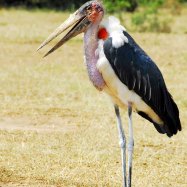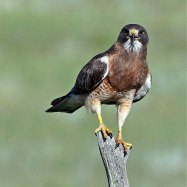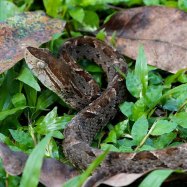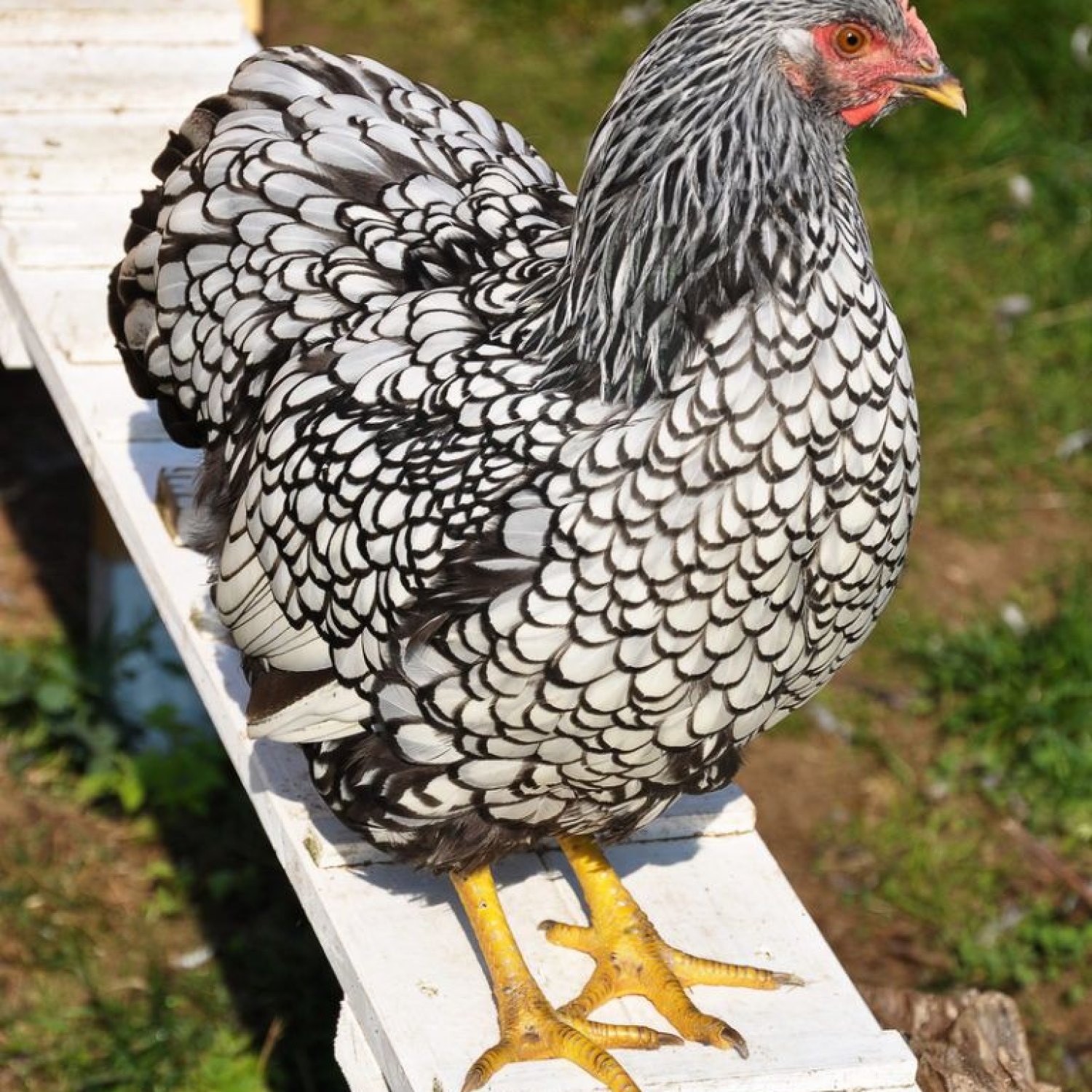
Wyandotte Chicken
Average length of 20 inches
Introducing the Wyandotte Chicken - a medium-sized, compact bird that is native to North America. On average, these chickens grow up to 20 inches in length and belong to the family Phasianidae. With their beautiful appearance and docile nature, Wyandotte Chickens are a popular choice among farmers and backyard chicken keepers alike. Keep reading to discover more about these charming birds!
Animal Details Summary:
Common Name: Wyandotte Chicken
Kingdom: Animalia
Habitat: Farms, backyards
The Remarkable Wyandotte Chicken: An Icon of the Backyard
The Wyandotte chicken is a popular domesticated bird known for its docile and friendly nature, as well as its beautiful color variations. It is a breed that has captivated the hearts of chicken enthusiasts and farmers alike for decades, not only for its aesthetic appearance but also for its practical uses in farming and backyard keeping.Named after the Wyandotte Native American tribe, this breed has a rich history that makes it a fascinating subject to study. From its genetic origins to its widespread geographical distribution, the Wyandotte chicken has become an iconic representation of the backyard and farm lifestyle Wyandotte Chicken.
This article will delve deeper into the world of the Wyandotte chicken, exploring its scientific name, common name, kingdom, phylum, class, order, family, habitat, feeding method, geographical distribution, country of origin, location, animal coloration, body shape, and average length. But most importantly, it will highlight the remarkable qualities that make this breed a standout among its feathered counterparts.
A Brief History
The Wyandotte chicken was developed in the United States in the 1870s by crossing breeds like the Silver Sebright and the Cochins. It was first introduced at the U.S. Poultry Society's Boston Show in 1883 and gained popularity quickly due to its hardiness and egg-laying abilities. The exact origin of the Wyandotte chicken is still up for debate, with some breeders claiming it was developed in New York, while others believe it was created in Pennsylvania.Despite its unclear origins, one thing is for certain – the Wyandotte chicken was bred as a dual-purpose bird, capable of providing both meat and eggs. Its popularity grew not only in the United States but also in other countries such as England, Germany, and Australia West Siberian Laika.
A Unique Scientific Name
The Wyandotte chicken's scientific name is Gallus gallus domesticus. The first part, "Gallus gallus," comes from the Latin word "gallus," meaning rooster, and the scientific term "gallus bankiva," which refers to the wild ancestor of all domesticated chickens. The second part of the name, "domesticus," means domesticated.This scientific name reflects the Wyandotte chicken's close genetic relation to the wild jungle fowl of Southeast Asia, known as the red jungle fowl (Gallus gallus). These wild fowls were domesticated about 8,000 years ago, eventually giving rise to the different chicken breeds we know today.
A Proud Member of the Aves Class
As a domesticated bird, the Wyandotte chicken falls under the Aves class, the scientific classification of birds that include more than 10,000 known species. Aves is a Latin term that roughly translates to "bird," highlighting the class's main characteristic.Some notable features that classify birds under the Aves include their wings, feathers, lightweight hollow bones, and laying of hard-shelled eggs. They are also considered warm-blooded animals with four-chambered hearts, making them highly efficient at maintaining a consistent body temperature.
An Order of Its Own: Galliformes
The Wyandotte chicken belongs to the Galliformes order, which includes over 290 species of birds such as chickens, turkeys, pheasants, and quails. The term "galliformes" means "chicken-like," referring to the distinct physical and behavioral characteristics of these birds.One of the striking features that distinguish Galliformes from other birds is their heavy, round-shaped body, designed for walking and scratching on the ground. They also have strong, curved claws for gripping and a sharp, curved beak for pecking and foraging. These unique traits make them well-adapted for a terrestrial lifestyle.
This order is divided into several families, with the Phasianidae family being the largest and most diverse, comprising roughly 185 species, including the Wyandotte chicken.
A Favorite Among Backyards and Farms
The Wyandotte chicken is classified under the Phasianidae family, which includes not only chickens but also quails, partridges, and pheasants. They are native to North America and were initially bred for their practical uses on farms and in backyards.However, their popularity as backyard pets has grown over the years, mainly due to their docile and gentle nature. They are also relatively easy to care for and have a long lifespan of around 8-10 years, making them ideal for families looking to raise a pet chicken.
A Versatile Feeder
One of the things that set the Wyandotte chicken apart from other breeds is its ability to thrive on various types of feed. As an omnivorous bird, it can consume both plants and animals, making them versatile and efficient foragers.In the wild, their diet would typically consist of insects, seeds, fruits, and small creatures like lizards and snails. But in captivity, Wyandotte chickens are fed a balanced diet of grains, seeds, vegetables, fruits, and sometimes protein sources like mealworms or small fish.
This flexibility in their diet makes it easier for backyard owners to keep them healthy and happy, even with limited resources.
A Beloved Breed Worldwide
Thanks to its popularity, the Wyandotte chicken has been exported and bred worldwide, making it a favorite among chicken enthusiasts and farmers across the globe. Its adaptability to different environments and its practicality as a dual-purpose breed has contributed to its widespread geographical distribution.Countries like Australia, Canada, the United Kingdom, and South Africa have all embraced the Wyandotte chicken, with different clubs and associations dedicated to preserving and promoting the breed.
A Proud Flag-bearer for the United States
Despite its adventurous journey around the world, the Wyandotte chicken is still considered an American breed, with its country of origin being the United States. Its precise origin is still a subject of debate. But one thing is for sure – it was first introduced and developed within the country's borders.As a testament to its American roots, the Wyandotte chicken was even declared the state bird of Ohio in 1986, where the first Wyandotte club and association was formed.
Variations in Coloration and Size
One of the most notable features of the Wyandotte chicken is its stunning color variations. These birds come in different colors, including black, white, gold, silver, blue, buff, and red. Some may even have a combination of these colors, making each Wyandotte chicken unique in its way.Their color is not the only thing that varies – they also come in different sizes. On average, they measure around 20 inches in length, with a medium-sized compact body and a small rose comb on top of their heads.
Their body shape, combined with their striking colors, makes the Wyandotte chicken a breathtaking sight to behold.
In Conclusion
The Wyandotte chicken is not just your ordinary backyard bird – it is a fascinating species with a rich history, a unique scientific name, and a distinct physical appearance. From its humble beginnings in the United States to its widespread geographical distribution, this dual-purpose breed has captured the hearts of people worldwide.Whether you are a chicken enthusiast, a backyard owner, or a farmer looking for a practical and friendly breed, the Wyandotte chicken is an excellent choice. Its versatility in diet, docile nature, and stunning coloration all make it a standout among its feathered counterparts. It truly is an iconic representation of the backyard and farm lifestyle.

Wyandotte Chicken
Animal Details Wyandotte Chicken - Scientific Name: Gallus gallus domesticus
- Category: Animals W
- Scientific Name: Gallus gallus domesticus
- Common Name: Wyandotte Chicken
- Kingdom: Animalia
- Phylum: Chordata
- Class: Aves
- Order: Galliformes
- Family: Phasianidae
- Habitat: Farms, backyards
- Feeding Method: Omnivorous
- Geographical Distribution: Worldwide
- Country of Origin: United States
- Location: North America
- Animal Coloration: Varies (black, white, gold, silver, etc.)
- Body Shape: Medium-sized, compact
- Length: Average length of 20 inches
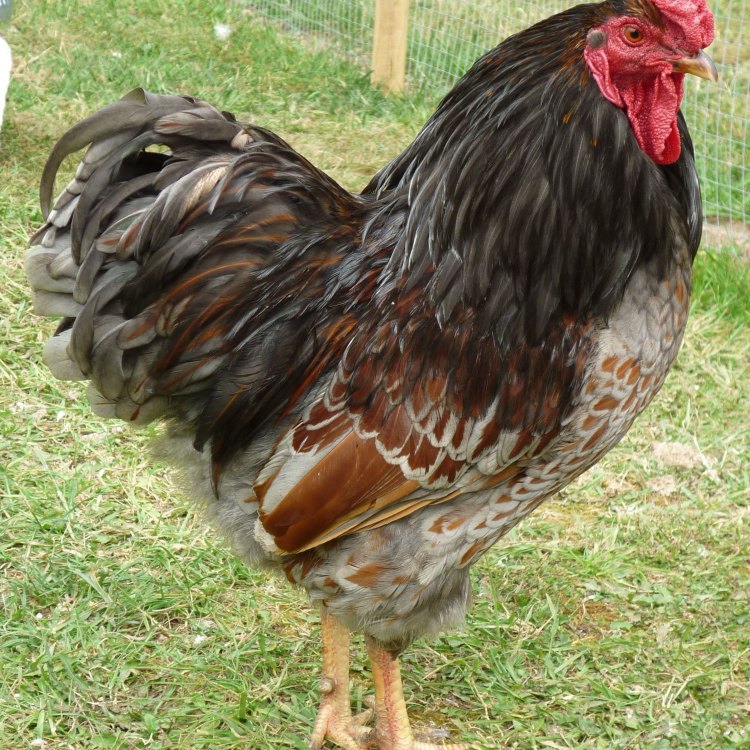
Wyandotte Chicken
- Adult Size: 5-8 pounds
- Average Lifespan: 5-10 years
- Reproduction: Sexual
- Reproductive Behavior: Egg-laying
- Sound or Call: Clucking
- Migration Pattern: Non-migratory
- Social Groups: Flocks
- Behavior: Calms, docile
- Threats: Predators, diseases
- Conservation Status: Not endangered
- Impact on Ecosystem: Seed dispersal, insect control
- Human Use: Meat, egg production, show competitions
- Distinctive Features: Rose comb, close-fitting feathers, rounded shape
- Interesting Facts: One of the oldest American chicken breeds
- Predator: Foxes, raccoons, hawks
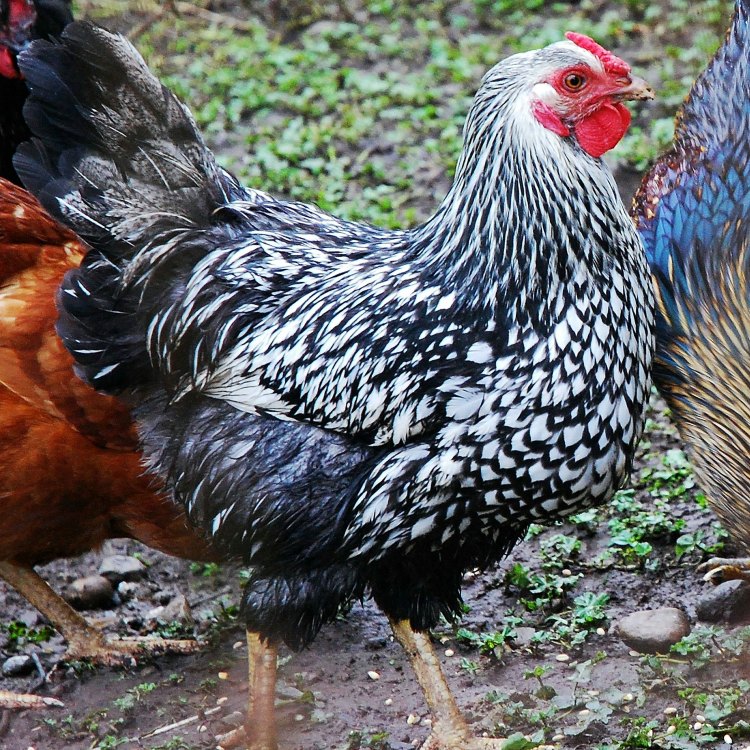
Gallus gallus domesticus
The Amazing World of Wyandotte Chicken: A Story of Grace, Strength, and Endurance
In a world where fast-paced, high-tech farming methods dominate, it's easy to overlook the humble chicken. But the Wyandotte chicken, with its distinctive features and rich history, is a breed that cannot escape notice. This hardy, versatile bird has been a favorite among farmers, homesteaders, and show competitors for decades. In this article, we dive into the fascinating world of Wyandotte chickens, exploring their unique characteristics, behavior, impact on the environment, and human uses PeaceOfAnimals.Com.The Basics: Adult Size, Lifespan, and Reproduction
The Wyandotte chicken is a medium-sized breed, measuring between 5-8 pounds when fully grown. They have a lifespan of 5-10 years, making them a long-term addition to any farm or backyard flock. They are a sexual reproductive species, with hens laying eggs and roosters fertilizing them for reproduction.A Familiar Sound, a Unique Behavior
If you've ever visited a farm or seen a children's book featuring chickens, chances are you've heard the sound of a chicken clucking. Wyandottes are no different, using this signature call to communicate with other members of their flock. But what sets Wyandottes apart in terms of behavior is their egg-laying capabilities. These birds are efficient egg-layers, producing an average of 200-250 eggs per year. That's equivalent to one egg every other day!Migratory Habits and Social Groups
Wyandotte chickens, like most domesticated chicken breeds, are non-migratory animals. This means that they do not travel long distances in search of food or better living conditions Whippet. Instead, they prefer to stay close to their home base, whether it's a farm, backyard, or coop.In terms of social groups, Wyandottes are most comfortable living among their own kind. They form tight-knit flocks where they can forage, roost, and socialize together. This group dynamic helps them feel safe and secure, ultimately contributing to their overall well-being and health.
Behaviors, Threats, and Conservation Status
One of the most remarkable traits of Wyandotte chickens is their calm and docile nature. These birds are not easily agitated, making them an excellent choice for first-time chicken keepers or families with young children. Their gentle demeanor also makes them popular as show birds, where they are judged on their appearance, temperament, and conformity to breed standards.However, like any other animal in the wild, Wyandottes also face threats from predators and diseases. Foxes, raccoons, and hawks are some of the most common predators that target these birds, especially if they are free-ranging. As for diseases, like any other bird, Wyandottes are susceptible to infections, parasites, and other ailments. Proper care and biosecurity measures can help minimize these risks.
Fortunately, Wyandotte chickens are not an endangered species. They are relatively abundant, and their population is stable. This is thanks to their adaptability, hardiness, and ease of care, making them a popular breed among farmers, homesteaders, and hobbyists.
The Impact of Wyandottes on the Environment
While domesticated chickens may seem insignificant when it comes to their impact on the environment, Wyandotte chickens, in particular, play a crucial role in their ecosystem. These chickens are voracious eaters, feeding on insects and other small creatures. They also scratch and peck at the ground, dispersing seeds and aerating the soil, which is beneficial for plant growth.What's more, Wyandotte chickens are excellent for controlling insect populations. They can consume a variety of bugs, including beetles, grasshoppers, and even ticks, reducing the need for pesticides on a farm or in a backyard.
Human Uses of Wyandotte Chickens
When it comes to human uses, Wyandotte chickens truly shine. They are a multipurpose breed, serving as a source of meat, eggs, and entertainment. Many people choose Wyandottes because of their delicious and nutritious eggs, which can range from brown to white, and their tasty, lean meat. In addition, Wyandottes are also a popular breed for show competitions, where different color varieties are judged on their appearance and temperament.The Distinctive Features of Wyandotte Chickens
One look at a Wyandotte chicken, and you'll know you're seeing something special. These birds have a unique appearance, with several distinctive features that make them stand out in the crowded world of chicken breeds. One such feature is their rose comb, a single, small comb with a rounded top that gives them a regal look. This comb type is prevalent among heritage breeds and serves as a thermal regulator, helping the chickens stay cool in the summer and warm in the winter.Another notable feature of Wyandotte chickens is their close-fitting feathers, which lay flat against their body, giving them a sleek appearance. This characteristic serves as insulation, protecting them from extreme temperatures and providing waterproofing during the rainy season. Additionally, Wyandottes have a rounded, almost plump shape, signaling their hardiness and health. It's no wonder they are nicknamed "the chubby American chicken."
Fascinating Facts about Wyandotte Chickens
Wyandotte chickens have a rich history, dating back to the early 19th century when the breed was developed in the United States. They were created by crossing several breeds, including the Silver Sebright, Buff Cochin, and Dark Brahmas. As a result, Wyandottes have a unique look, with a triple coat of feathers, and come in various color varieties, including black, blue, buff, gold, and silver.Despite their long history, Wyandotte chickens have managed to stay relevant, proving their resilience, adaptability, and versatility. Today, they are among the most popular breeds in the United States and Canada, and their popularity stretches globally.
The Bottom Line
Wyandotte chickens are more than just farm animals or show birds. They are a symbol of strength, endurance, and grace, captivating people with their distinctive features and gentle nature. Whether you're a first-time chicken keeper, a seasoned farmer, or someone looking for a unique addition to their flock, Wyandotte chickens are an excellent choice. They are a testament to the beauty and diversity of our natural world and a reminder that even the smallest creatures can have a widespread impact. So let's raise a glass to these magnificent birds, and may their legacy continue for generations to come.
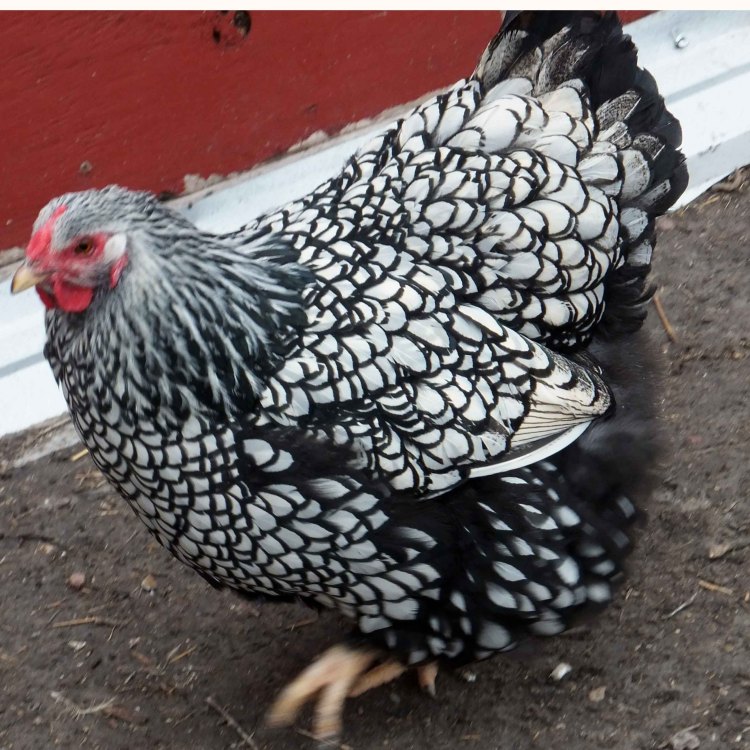
The Remarkable Wyandotte Chicken: An Icon of the Backyard
Disclaimer: The content provided is for informational purposes only. We cannot guarantee the accuracy of the information on this page 100%. All information provided here may change without prior notice.

